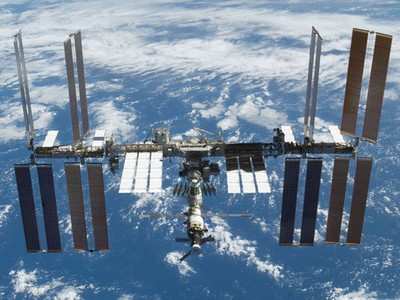NASA Studies Find Omega-3 May Help Reduce Bone Loss
 NASA-sponsored studies have found that omega-3 fatty acids
found in fish oil may play a role in mitigating bone breakdown that
occurs during spaceflight and in osteoporosis. Ongoing research for
decades has looked for ways to stop bone density loss in
astronauts. The solution could have significant implications for
space travelers and those susceptible to bone loss on Earth.
NASA-sponsored studies have found that omega-3 fatty acids
found in fish oil may play a role in mitigating bone breakdown that
occurs during spaceflight and in osteoporosis. Ongoing research for
decades has looked for ways to stop bone density loss in
astronauts. The solution could have significant implications for
space travelers and those susceptible to bone loss on Earth.
The studies' results are published in the May issue of the
Journal of Bone and Mineral Research. The paper reports on four
types of studies using cell culture, ground-based bed rest, and
data from both space shuttle and International Space Station crew
members. NASA studies bone density loss because it is one of the
main effects of exposure to the weightlessness of space. Scientists
hope to find ways to counteract the problem for astronauts on
long-duration space voyages.
In a series of cell-based studies, scientists documented that
adding a specific omega-3 fatty acid to cells would inhibit the
activation of factors that lead to bone breakdown. This was true in
both typical cell cultures and those designed to mimic
weightlessness. The inhibited factor is known as "nuclear factor
kappa B" or NFKB. NFKB is involved in immune system behavior and
the inflammation process. The activation of NFKB in different
tissues can lead to bone and muscle loss.
In a study of astronauts returning from short-duration shuttle
missions, researchers found that NFKB activation was increased in
blood cells collected at landing, and remained elevated for two
weeks. These data provide evidence that inflammatory processes may
be involved in some of the adaptation to microgravity and suggest
that reducing NFKB activation could serve as a countermeasure to
bone loss.
A ground-based bed rest study was conducted on 16 subjects with
the evaluations performed after 60 days. Bed rest simulates some of
the effects of weightlessness, including muscle and bone loss.
During the study, higher intake of omega-3 fatty acids was
associated with less bone loss.

Based on these studies, the investigators evaluated bone loss in
astronauts and compared their findings to reported fish intake
during spaceflight. Researchers found that astronauts who ate more
fish lost less bone mineral after four-to-six-month spaceflights.
Tracking fish consumption is not as accurate as determining exact
diet and omega-3 fatty acid intake, but these data were not
available.
"These results are very exciting, and provide initial evidence
that nutrition may be a key factor in mitigating bone loss in
astronauts," said Scott Smith, a nutritionist at NASA's Johnson
Space Center in Houston and one of the paper's authors.
The studies were conducted by a team of scientists across
multiple disciplines at Johnson. Smith and Sara Zwart lead the
center's Nutritional Biochemistry Laboratory. Duane Pierson and
Satish Mehta work for the Microbiology Laboratory and led the
shuttle-based studies. Steve Gonda, a NASA scientist and a
co-author, died before publication of the studies.
 ANN's Daily Aero-Linx (05.02.24)
ANN's Daily Aero-Linx (05.02.24) ANN's Daily Aero-Term (05.02.24): Touchdown Zone Lighting
ANN's Daily Aero-Term (05.02.24): Touchdown Zone Lighting Aero-News: Quote of the Day (05.02.24)
Aero-News: Quote of the Day (05.02.24) ANN FAQ: Contributing To Aero-TV
ANN FAQ: Contributing To Aero-TV NTSB Final Report: Cirrus Design Corp SR20
NTSB Final Report: Cirrus Design Corp SR20




